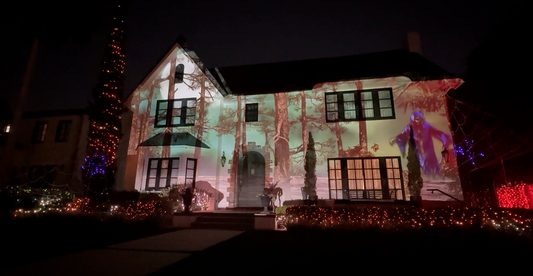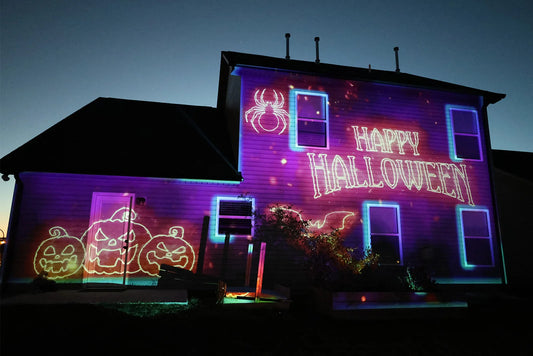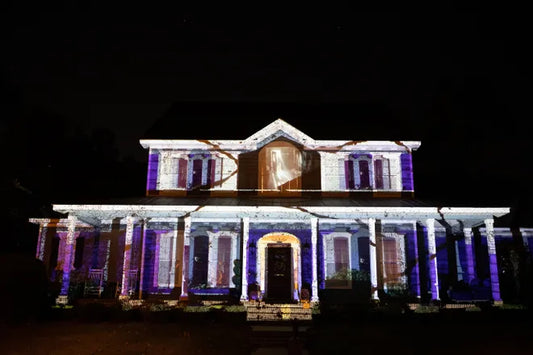Projection mapping has become increasingly popular during the holiday season, but it’s not just limited to that time of year. In fact, projection mapping can be used throughout the year for a wide variety of events and occasions. Here are some ways you can utilize projection mapping outside of the holiday season:
- Weddings: Projection mapping can add a touch of magic to weddings. Imagine projecting the couple’s initials or a slideshow of their engagement photos onto the wall of the reception venue. Or, projecting a starry night sky onto the ceiling during the first dance.
- Concerts and festivals: Projection mapping can enhance the visual experience for concert-goers and festival attendees. Projecting dynamic visuals and graphics onto the stage or surrounding structures can create an immersive experience for the audience.
- Corporate events: Projection mapping can add a professional and innovative touch to corporate events, such as product launches or company meetings. You can project company logos or key messages onto the walls or floor, or use projection mapping to create an engaging presentation.
- Art installations: Projection mapping can be used to create stunning art installations that are both interactive and visually captivating. The possibilities are endless, from projecting artwork onto the walls of a gallery to creating a 3D projection sculpture in a public space.
- Retail displays: Projection mapping can be a great tool for retailers to attract customers and create an engaging shopping experience. You can project advertisements or branding onto the exterior of your store, or create an interactive display inside the store.
Now that you know how projection mapping can be used outside of the holiday season, let’s dive into some tips on how to choose the right projector for your event:
- Lumens: Lumens is a measurement of brightness. The higher the lumens, the brighter the projector. For outdoor events or large spaces, you’ll need a projector with high lumens to ensure the image is visible.
- Contrast ratio: Contrast ratio is the difference between the brightest and darkest parts of an image. A high contrast ratio will make the image appear more vibrant and detailed.
- Resolution: The resolution of the projector is the number of pixels in the image. The higher the resolution, the sharper and more detailed the image will be. For events with a large audience or if you’re projecting onto a large surface, a high resolution projector is recommended.
- Throw distance: The throw distance is the distance between the projector and the surface it’s projecting onto. For larger surfaces, you’ll need a projector with a longer throw distance.
- Portability: Depending on the event or occasion, you may need a projector that is portable and easy to move around. Consider the weight and size of the projector when making your choice.
By understanding the key factors to consider when choosing a projector and the various ways projection mapping can be used, you can take your event or installation to the next level.




